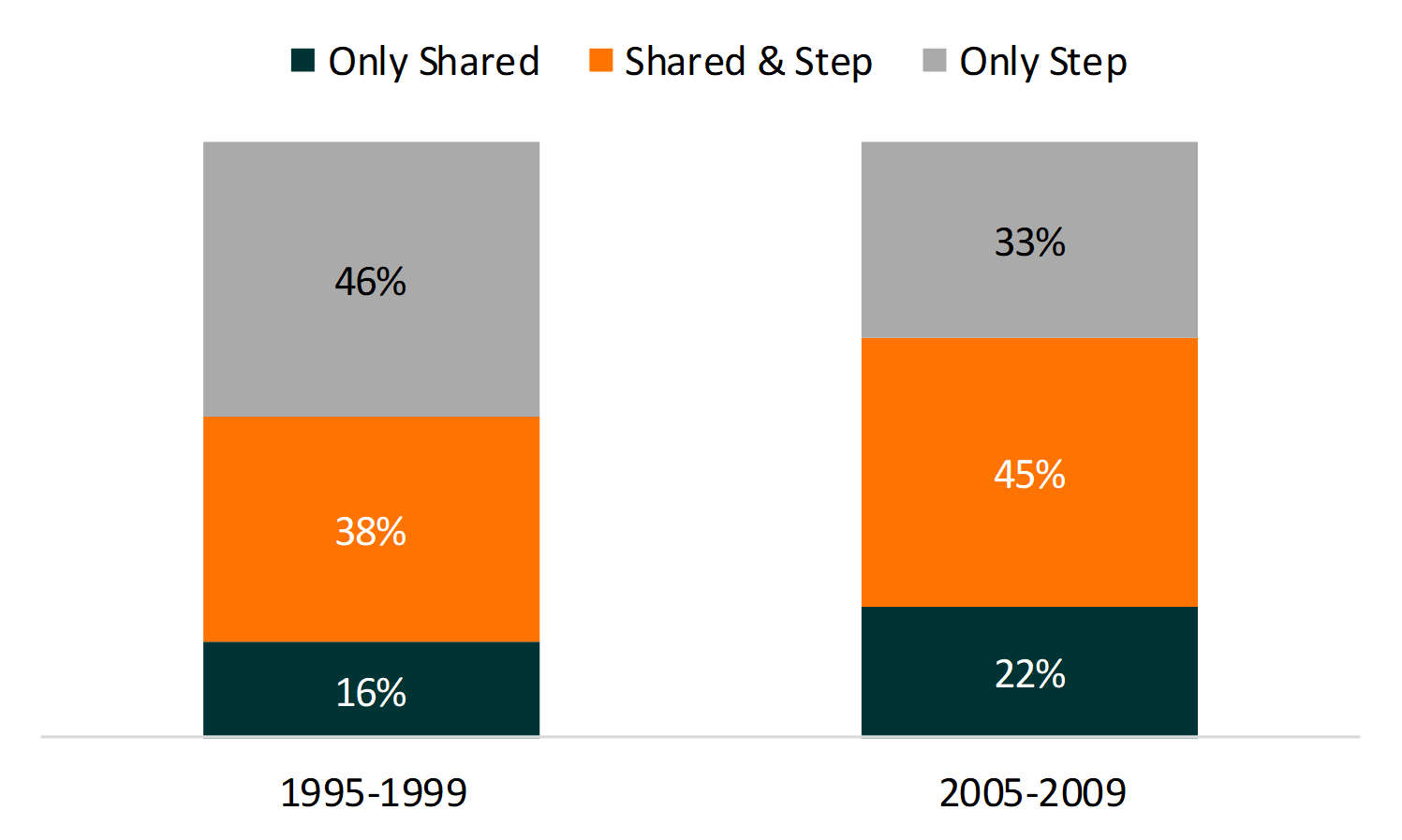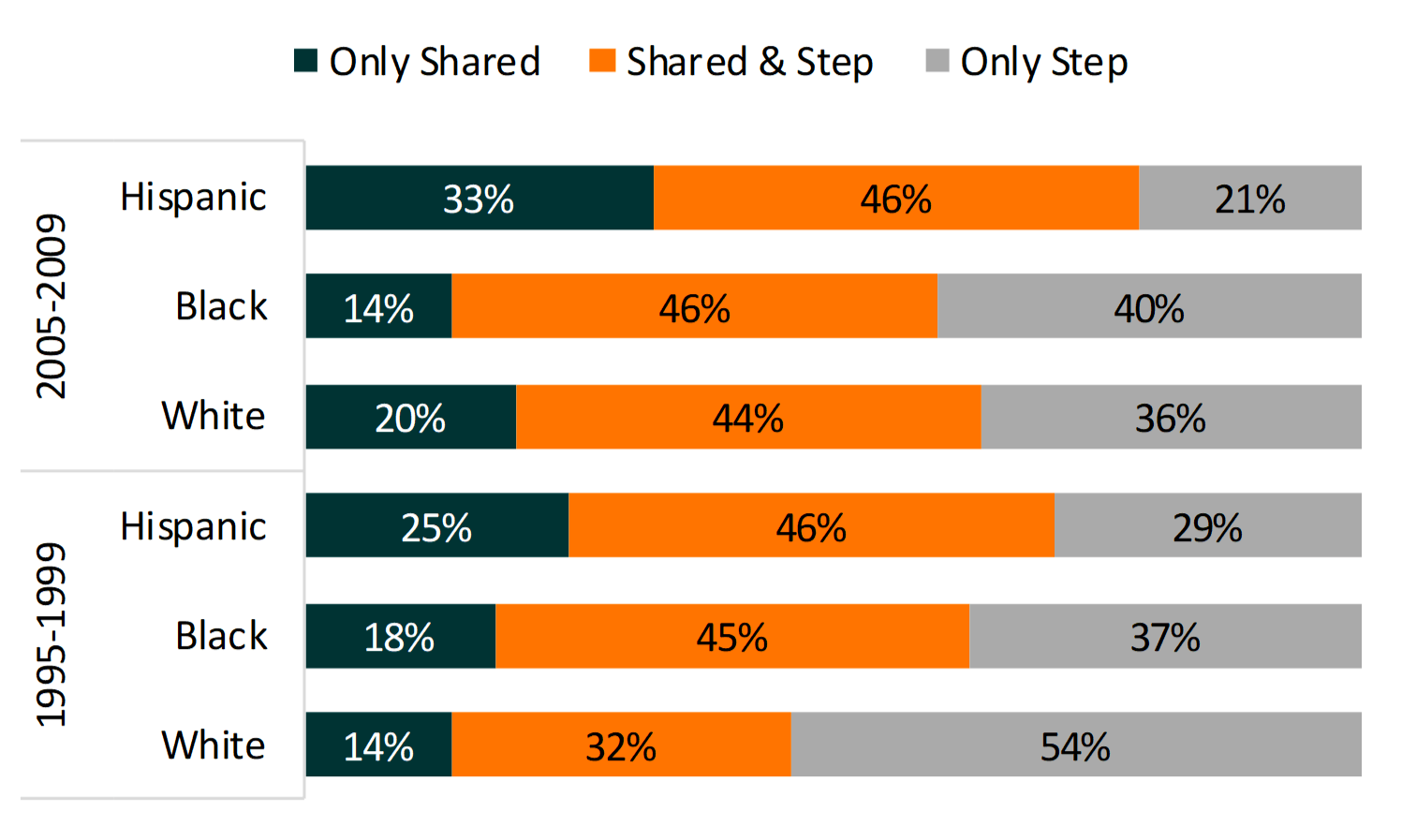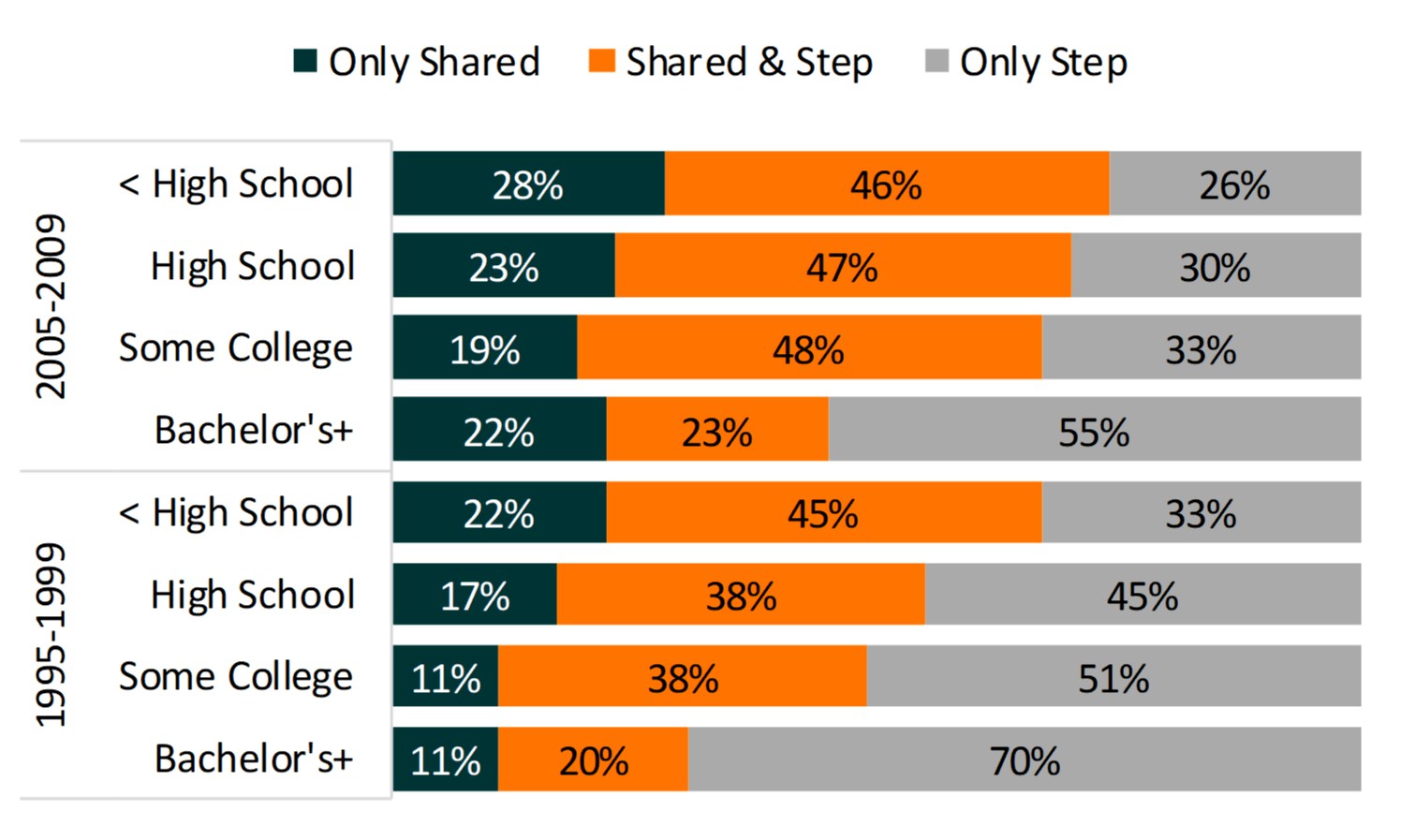Composition of Cohabiting Families
Family Profile No. 02, 2019
Author: Kasey J. Eickmeyer
This profile is the second in a series investigating cohabitors’ families. The share of cohabiting women raising biological children increased from 31% to 40% in the decade between 1995-1999 and 2005-2009 (FP-19-01). Using data from the 2002 and 2011- 2015 National Survey of Family Growth, this second Family Profile describes the families of cohabitors, which can include shared biological children and/or non-biological (step) children regardless of residency.
Composition of Cohabiting Families With Children
- An increase occurred in the percentage of cohabiting families raising at least one shared biological child from about half (54%) in the earlier cohort to two-thirds (67%) in the later cohort.
- This was offset by a decline in the share of cohabiting families raising only stepchildren from about half (46%) to one-third (33%).
- Cohabiting parent families are more complex in the later cohort, with two fifths (38%) in the earlier cohort to approaching half (45%) in the later cohort, including both biological and stepchildren.
Figure 1. Composition of Cohabiting Families With Children

Race & Ethnicity
The composition of cohabiting families differed by racial and ethnic group, and each group experienced change over time.
- The percentage of White and Hispanic cohabitors raising only shared children increased between 1995-1999 and 2005- 2009, while there was a decline among Black women from 18% to 14%.
- White and Black women experienced an increase in the proportion raising both shared and stepchildren (from 32% to 44% and 45% to 46%, respectively), but among Hispanic women, there was no change.
- There was a decline in the share of White and Hispanic cohabiting women raising only stepchildren, but among Black women, there was an increase from 37% to 40%.
Figure 2. Composition of Cohabiting Families With Children by Mother’s Race/Ethnicity

Educational Attainment
The negative education gradient in the composition of cohabiting families with children persists over time. Additionally, all education groups experienced an increase in the percentage raising only shared children, as well as both shared and stepchildren, but a decline in the percentage raising only stepchildren.
- The proportion of cohabitors with a Bachelor’s degree who were raising only shared children doubled between 1995- 1999 and 2005-2009 from 11% to 22%.
- Almost half of those without a college degree were raising both shared and stepchildren.
- Over half (55%) of cohabitors with a Bachelor’s degree reported raising only stepchildren compared to one-third or less among those without a Bachelor’s degree.
Figure 3. Composition of Cohabiting Families With Children by Mother’s Education


Data Citations
- National Center for Health Statistics (NCHS). (2004). Cycle 6: 2002 National Survey of Family Growth Public Use Data and Documentation. Hyattsville, MD: CDC National Center for Health Statistics. Retrieved from https://www.cdc.gov/nchs/nsfg/nsfg_cycle6.htm
- National Center for Health Statistics (NCHS). (2014). 2011-2013 National Survey of Family Growth Public Use Data and Documentation. Hyattsville, MD: CDC National Center for Health Statistics. Retrieved from https://www.cdc.gov/nchs/nsfg/nsfg_2011_2013_puf.htm
- National Center for Health Statistics (NCHS). (2016). 2013-2015 National Survey of Family Growth Public Use Data and Documentation. Hyattsville, MD: CDC National Center for Health Statistics. Retrieved from http://www.cdc.gov/nchs/nsfg/nsfg_2013_2015_puf.htm
References
- Eickmeyer, K. J. (2019). Cohabitors raising shared children. Family Profiles, FP-19-01. Bowling Green, OH: National Center for Family & Marriage Research. https://doi.org/10.25035/ncfmr/fp-19-01
Suggested Citation
- Eickmeyer, K. J. (2019). Composition of cohabiting families. Family Profiles, FP-19-02. Bowling Green, OH: National Center for Family & Marriage Research. https://doi.org/10.25035/ncfmr/fp-19-02.
Updated: 11/07/2025 03:24PM


